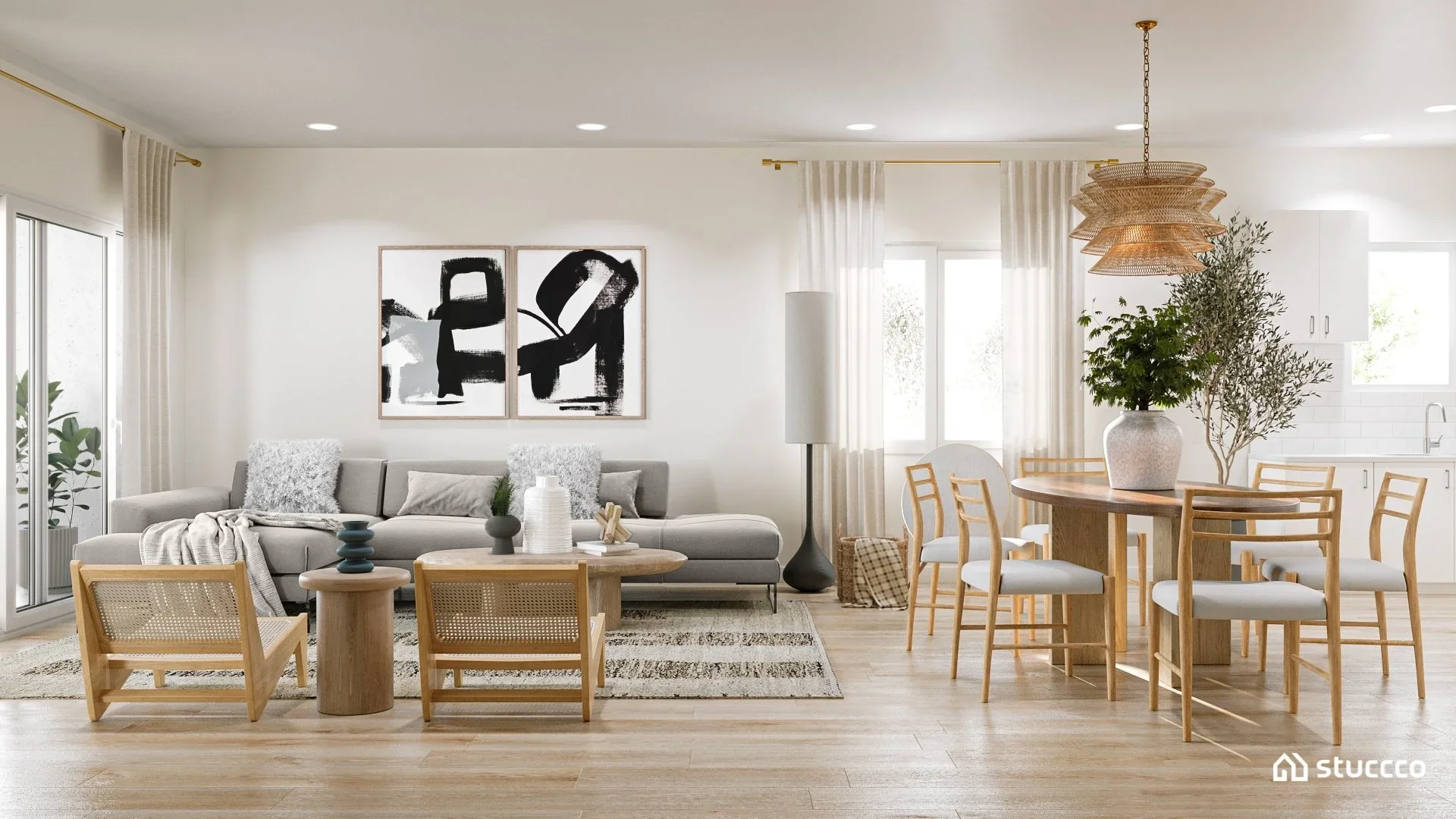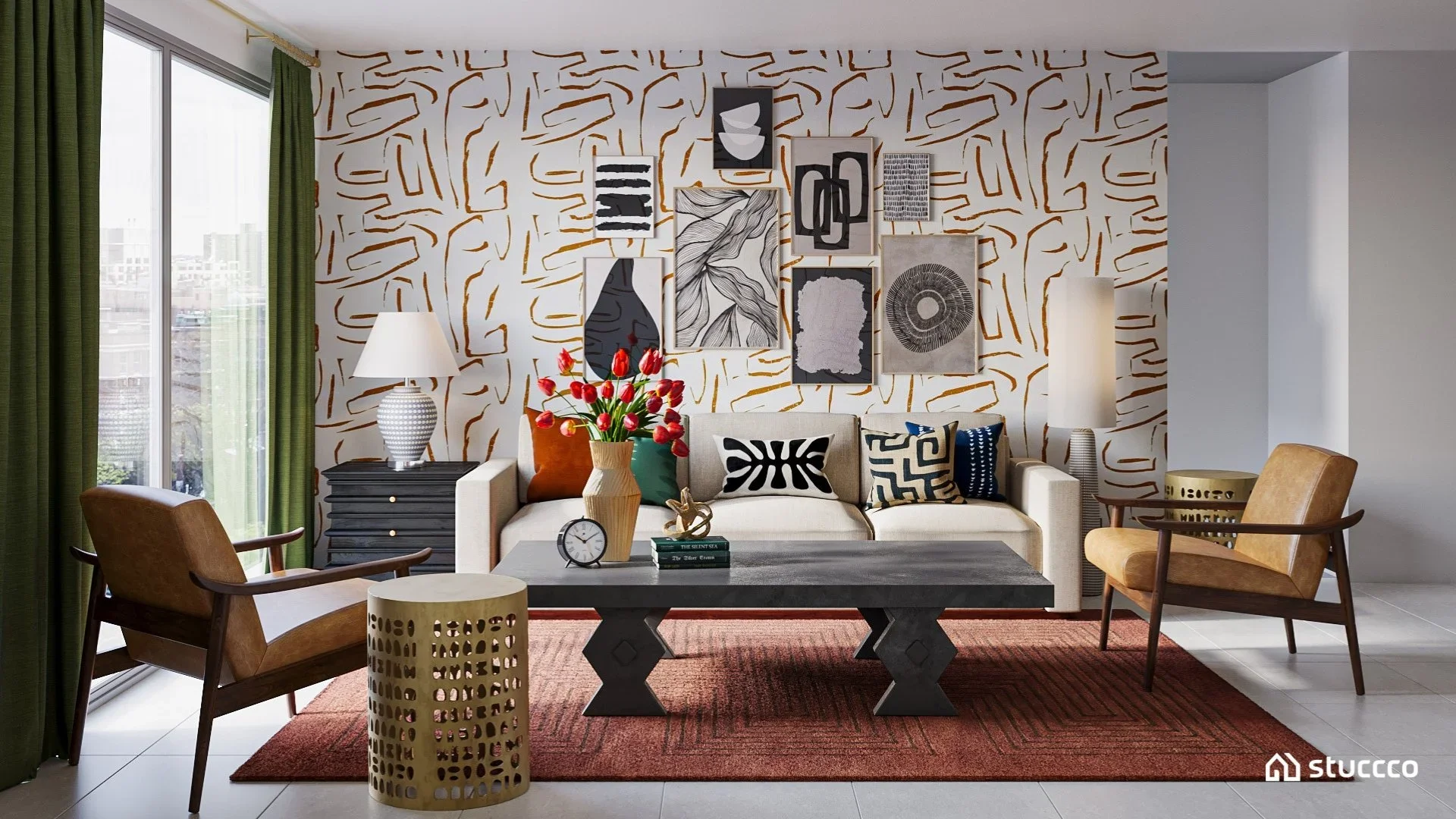Ask Joshua: What’s the Difference Between Organic Modern and Japandi Style?
Hi Joshua,
My husband and I are exploring new design styles for our home because we want to make a big shift in our lifestyle — from chaotic to calm and serene. We’ve been drawn to both Organic Modern and Japandi styles since we love the look and the peaceful vibe they bring to a space. The only problem is, we’re having a hard time telling the difference between the two.
We noticed that you’ve worked with these design styles and would love to hear your thoughts. Could you please explain the difference between Organic Modern and Japandi?
Thank you very much!
Kim – San Francisco, California
A serene Japandi-style open-concept living and dining room designed by virtual interior designer Joshua Jones of JJones Design Co. This photorealistic 3D rendering, created by Stuccco, highlights the calm balance of Scandinavian warmth and Japanese minimalism.
Hi Kim,
That’s such a wonderful question — and I love that you and your husband are drawn to both Organic Modern and Japandi. They’re two of my favorite design styles because they share the same goal: creating spaces that feel calm, intentional, and deeply connected to nature.
Before diving in, I want to mention something that can be a little confusing — the term Organic Modern is often used interchangeably with Modern Organic. I’ve personally used “Modern Organic” for years because it feels more natural to say, but both describe the same design style. “Organic Modern” simply became the more widely recognized term in the design world, much like how “Mid-Century Modern” became the accepted phrase. So, don’t worry — they’re two names for the same aesthetic.
Now, let’s look at how Organic Modern and Japandi differ and why they each create that sense of serenity you’re drawn to.
Organic Modern design starts with a modern foundation — clean lines, minimal clutter, and simple forms — then softens it through natural textures, earthy tones, and organic shapes. Think of smooth stone tables, linen upholstery, warm wood accents, and sculptural lighting. The palette tends to stay neutral but layered with texture — a mix of matte ceramics, woven fibers, and subtle patterning that adds warmth without overwhelming the senses. It’s modern, but it feels lived in.
Japandi, on the other hand, blends Japanese minimalism with Scandinavian warmth. It’s even more pared down, focusing on simplicity, craftsmanship, and the beauty of imperfection — a concept known as wabi-sabi. The lines are cleaner, the color palette often more muted, and every object feels intentional. You’ll see low-profile furniture, natural woods like ash or oak, and a strong sense of balance between light and dark elements. Japandi embraces empty space as part of the design — the room itself breathes.
If I had to summarize it:
Organic Modern feels warm, soft, and tactile — a modern home with organic heart.
Japandi feels calm, structured, and philosophical — a minimalist home with soul.
Both will bring that serene lifestyle you’re seeking, but the choice comes down to how much warmth versus restraint you want. If you love cozy layers and texture, lean toward Organic Modern. If you find peace in simplicity and clean geometry, Japandi might be your match.
My advice? Don’t feel pressured to choose one or the other. Many of today’s most inviting interiors blend elements of both — the texture and warmth of Organic Modern with the balance and discipline of Japandi. Start with the pieces that make you feel grounded and at ease, and your home will naturally reflect the calm lifestyle you’re aiming for.
Warmly,
Joshua
Have interior design related questions? You can ask Joshua here.



